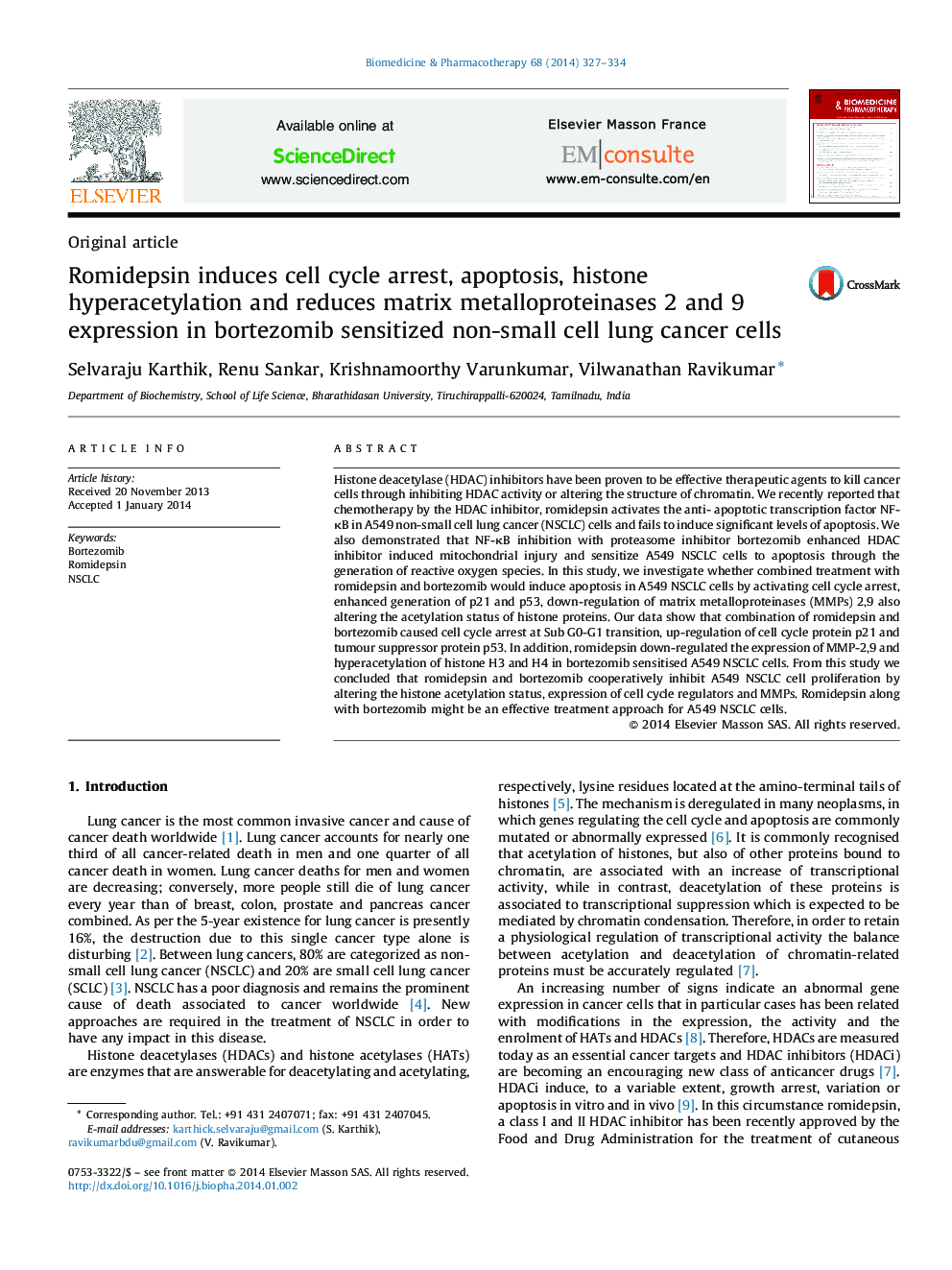| Article ID | Journal | Published Year | Pages | File Type |
|---|---|---|---|---|
| 2524328 | Biomedicine & Pharmacotherapy | 2014 | 8 Pages |
Histone deacetylase (HDAC) inhibitors have been proven to be effective therapeutic agents to kill cancer cells through inhibiting HDAC activity or altering the structure of chromatin. We recently reported that chemotherapy by the HDAC inhibitor, romidepsin activates the anti- apoptotic transcription factor NF-κB in A549 non-small cell lung cancer (NSCLC) cells and fails to induce significant levels of apoptosis. We also demonstrated that NF-κB inhibition with proteasome inhibitor bortezomib enhanced HDAC inhibitor induced mitochondrial injury and sensitize A549 NSCLC cells to apoptosis through the generation of reactive oxygen species. In this study, we investigate whether combined treatment with romidepsin and bortezomib would induce apoptosis in A549 NSCLC cells by activating cell cycle arrest, enhanced generation of p21 and p53, down-regulation of matrix metalloproteinases (MMPs) 2,9 also altering the acetylation status of histone proteins. Our data show that combination of romidepsin and bortezomib caused cell cycle arrest at Sub G0-G1 transition, up-regulation of cell cycle protein p21 and tumour suppressor protein p53. In addition, romidepsin down-regulated the expression of MMP-2,9 and hyperacetylation of histone H3 and H4 in bortezomib sensitised A549 NSCLC cells. From this study we concluded that romidepsin and bortezomib cooperatively inhibit A549 NSCLC cell proliferation by altering the histone acetylation status, expression of cell cycle regulators and MMPs. Romidepsin along with bortezomib might be an effective treatment approach for A549 NSCLC cells.
